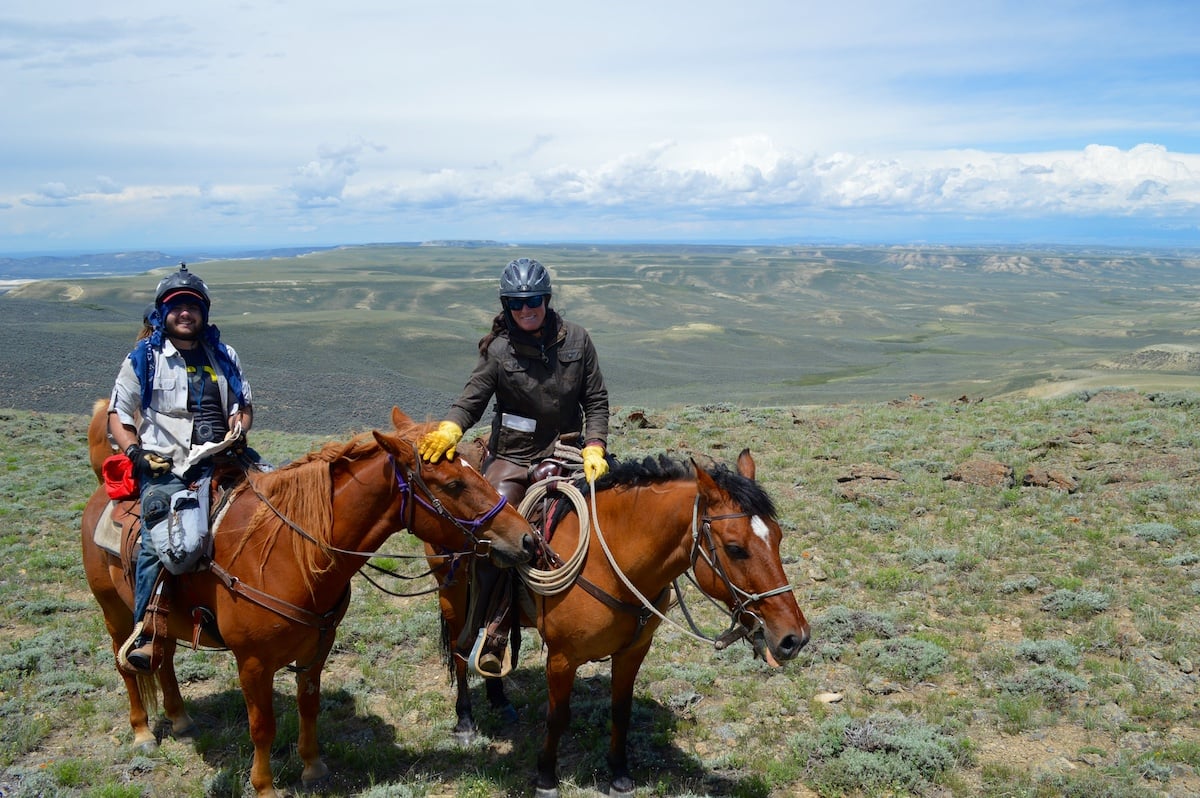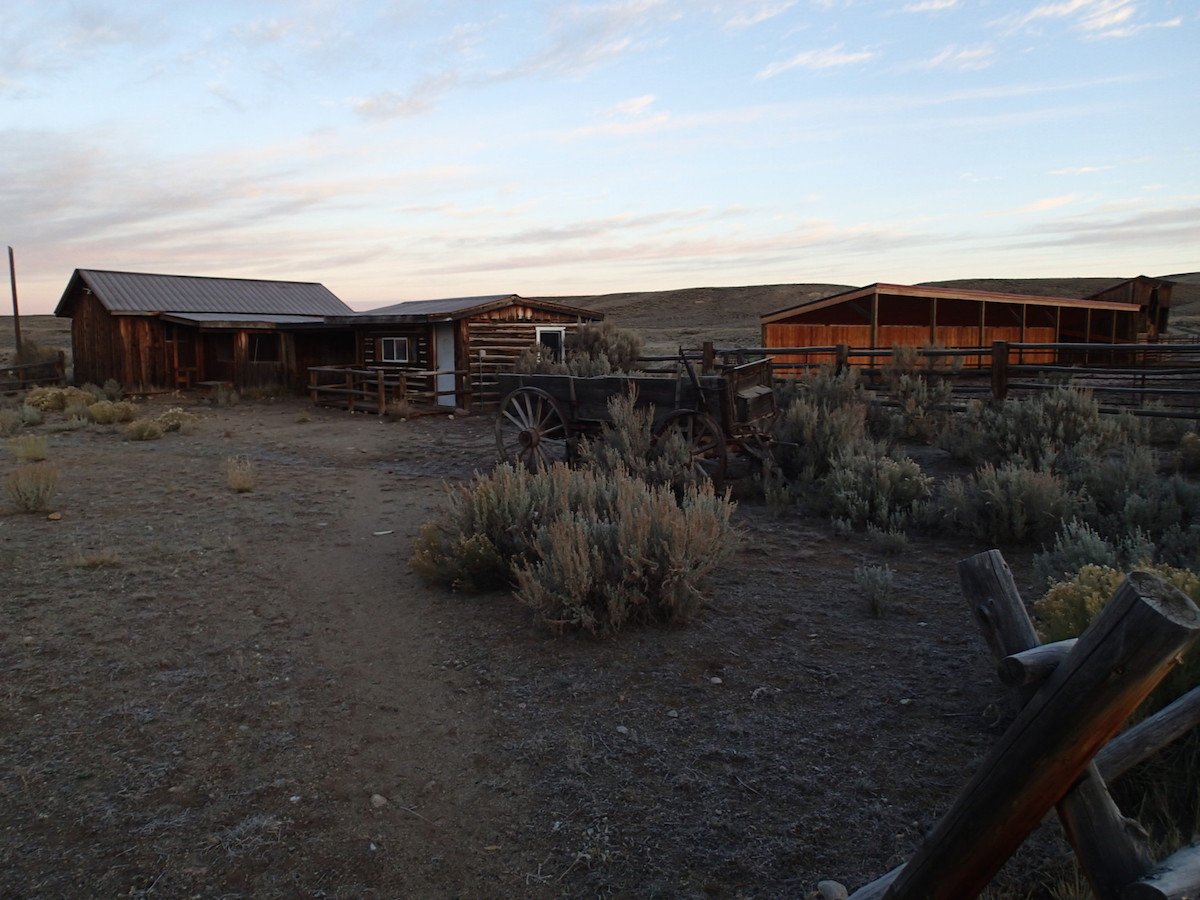
The Setting
You’re a biologist working out of a remote ranch on the sagebrush plains of southern Idaho. It’s early May. You ride and walk daily to survey herds of pronghorn as part of a research program. One of your classmates goes to bed feeling lousy—achy, nauseous—and wakes up feeling worse.
Knowing you have training as a Wilderness First Responder (WFR), your colleagues ask you to take a look at this poor fellow.
SOAP Report
Subjective
The patient is a 21-year-old male complaining of a headache, nausea, muscle aches, fever, and chills. These symptoms began yesterday and have persisted through the night.
Objective
Patient Exam
The patient is in his sleeping bag in the bunkhouse. He denies any recent injury mechanism. No findings on a head-to-toe assessment.
Vital Signs
|
Time |
6:30 a.m. |
|
Level of Responsiveness (LOR) |
A+Ox4 |
|
Heart Rate (HR) |
72, strong, regular |
|
Respiratory Rate (RR) |
14, regular, easy |
|
Skin Color, Temperature, Moisture (SCTM) |
pale, warm, dry |
|
Blood Pressure (BP) |
radial pulses present |
|
Pupils |
PERRL (Pupils equal, round, responsive to light) |
|
Temperature T° |
101°F (38.3°C) |
History
|
Symptoms: |
Dull headache, nausea, muscle aches, loss of energy and appetite. No diarrhea, vomiting, sore throat, neck stiffness, shortness of breath, cough, or sinus congestion. These symptoms began yesterday and have persisted through the night. No known cause. Other group members are not experiencing these symptoms. |
|
Allergies: |
Patient thinks he may be allergic to “cillin” antibiotics but does not remember a specific event causing this concern. |
|
Medications: |
Patient is not on any regular medications. For this illness he has been taking ibuprofen: 400 mg every 6 hours since noon yesterday. |
|
Pertinent Hx: |
None. |
|
Last in/out: |
Patient ate breakfast yesterday and a small meal last night. He has not had breakfast today. Patient states he has been trying to stay hydrated and drank 3 liters yesterday. He urinated clear urine this morning. Patient has not had a bowel movement today. |
|
Events: |
This illness began suddenly 24 hours ago. The patient reported that two days ago he found a tick embedded in his left armpit. He didn’t think it had been there long because he was diligent about checking for ticks. |
STOP READING!
What is your assessment and plan? Take a few minutes to figure out your own assessment and make a plan. Don’t cheat—no reading on without answering this first!

Photo by Terry Lui.
Assessment
- Patient appears to have a flu-like illness with a high fever. It is right at the threshold for evacuation that you remember from your WFR course. The patient thinks he just has “the flu” and does not want to go see a doctor.
Plan
- You will stay at the ranch today and allow the patient to rest and hydrate. We’ll monitor his condition and make an appropriate decision if his condition changes. When the local clinic (2 hours away by dirt road) opens later this morning, you’ll call on the satellite phone and talk to the doctor or nurse for advice.
Anticipated problems
- This illness persists or worsens and warrants an evacuation.
- The weather, which is currently fine, changes for the worse and complicates the evacuation picture.
Notes from NOLS on Treating and Identifying Illnesses
A challenge to the wilderness leader (or anyone in a remote location) is knowing how to manage common signs and symptoms such as fever, headache, nausea, diarrhea, sore throat, cough, congestion, runny nose, etc. Are these a “stomach bug,” a “stomach flu,” a “cold” or “flu,” or a sign of a more specific illness?
In this case you’re suspicious about the tick bite, and worried about the fever. As a biologist you know that the local ticks (relatives of spiders and scorpions) are the hard tick, genus Dermacentor.
As with all ticks, it requires blood meals to molt from larva to nymph and from nymph to adult. The various diseases a tick carries are transmitted to the host (possibly your patient) during the blood meal. These diseases include Tick Fever, Relapsing Fever, Spotted Fever, Tularemia, Babesiosis, Lyme, and other diseases. Tick season in the central Rockies is April through July, although ticks are active throughout the warm months.
At the ranch, ticks seem to be everywhere this spring, and it’s been common for you to find a dozen ticks on your body every day, especially after you walk through the sage. They’re on the horses as well.
It's an odd form of luck that these ticks are large enough to see. Some ticks are quite small.
Prevention
The old hands at the ranch have been touting prevention. You’ve been visually inspecting yourself morning and night (usually). Your jeans are, unfortunately, dark blue. The common recommendation is to wear light colored clothing so you can see the ticks better, but even if you chose light pants, the dirt and grime would soon make them dark.
Some of the group have tried Permethrin, spraying it on their pants below their knees and on their boots or soaking it into their clothing. Permethrin is a contact insecticide, not a repellent. It kills ticks or other insects. It contains the same active ingredient as shampoos for head lice. It’s FDA-approved for use on skin, but is commonly used on clothing, where it binds to the fabric. Permethrin is very effective at keeping ticks from attaching.
A visual inspection of all body parts at least twice daily is recommended, as adult ticks generally stay on the body for a few hours before attaching. Even after a tick has attached itself, prompt removal may prevent the transmission of disease.
To remove a tick, grasp it as close to the skin as possible with tweezers or gloved fingers. Pull the tick out with steady pressure. Clean the bite site thoroughly with an antiseptic soap. Traditional tick removal methods (a hot match head, nail polish, or alcohol) are not recommended.
Treatment Principles
Diagnosis of tick-caused illness in the field is difficult. If a tick bite is accompanied by a rash, fever, flu symptoms, or muscle aches and pains, the patient should be seen by a physician.
If you have a fever without the obvious tick bite, you can try to make the patient more comfortable with acetaminophen or ibuprofen. If the fever persists for more than 48 hours, is greater than 102°F/38.8°C, or is associated with a severe headache or stiff neck, the patient should be evacuated.
A Final Note: COVID-19
This scenario was crafted before the COVID-19 pandemic and while it strongly suggests a fever secondary to a tick bite, you need to assume ill people may be infected with COVID-19. Approach this patient with a mask, gloves, goggles (whatever eye cover you may have) and ideally a gown, in this case practically your wind and rain gear. Also place a mask on the patient, and limit visitors. When you leave their side you very carefully remove your outwear, trying to avoid contamination and wash it. You then carefully remove your gloves and mask. Wash your hands and any surfaces you might have touched and wash your mask as well.
The Story Continues...
It takes until 1:00 p.m. for you to get through on the satellite phone to the clinic. During the day the patient’s S/S have persisted and your vital sign reports record an undulating fever.
|
Time |
6:30 a.m. |
8:30 a.m. |
10:30 a.m. |
11:30 a.m. |
|
Level of Responsiveness (LOR) |
A+Ox4 |
A+Ox4 |
A+Ox4 |
A+Ox4 |
|
Heart Rate (HR) |
72, strong, regular |
72, strong, regular |
72, strong, regular |
72, strong, regular |
|
Respiratory Rate (RR) |
14, regular, easy |
14, regular, easy |
14, regular, easy |
14, regular, easy |
|
Skin Color, Temperature, Moisture (SCTM) |
pale, warm, dry |
pale, warm, dry |
pale, warm, dry |
pale, warm, dry |
|
Blood Pressure (BP) |
radial pulses present |
radial pulses present |
radial pulses present |
radial pulses present |
|
Pupils |
PERRL |
PERRL |
PERRL |
PERRL |
|
Temperature T° |
101°F (38.3°C) |
104°F (40°C) |
101°F (38°C) |
104°F (40°C) |
The Tale Ends
You decided it was time to take this patient to see a doctor. He was obviously sick and the 104°F (40°C) fever triggered an evacuation threshold you remembered from your WFR. The patient didn’t argue and the doctor agreed.
The drive to town was slow but uneventful and the patient spent the night at the clinic with a diagnosis of probable tick fever. He was sick for a week, and weak for another week, but eventually was able to return to the ranch and finish the research project.
- Wilderness First Responder
- First Aid
- Case Studies
- Wilderness Medicine
- Flu Like Illness
- Illness & Injuries
Written By
Tod Schimelpfenig
As a NOLS Instructor since 1973 and a WEMT, volunteer EMT on ambulance and search and rescue squads since the 70s, Tod Schimelpfenig has extensive experience with wilderness risk management. He has used this valuable experience to conduct safety reviews as well as serve as the NOLS Risk Management Director for eight years, the NOLS Rocky Mountain Director for six years, and three years on the board of directors of the Wilderness Medical Society, where he received the WMS Warren Bowman Award for lifetime contribution to the field of wilderness medicine. Tod is the founder of the Wilderness Risk Manager’s Committee, has spoken at numerous conferences on pre-hospital and wilderness medicine, including the Australian National Conference on Risk Management in Outdoor Recreation, and has taught wilderness medicine around the world. He has written numerous articles on educational program, risk management and wilderness medicine topics, and currently reviews articles for the Journal of Wilderness and Environmental Medicine. Additionally, he is the author of NOLS Wilderness Medicine and co-author of Risk Management for Outdoor Leaders, as well as multiple articles regarding wilderness medicine. Tod is the retired curriculum director for NOLS Wilderness Medicine and is an active wilderness medicine instructor





